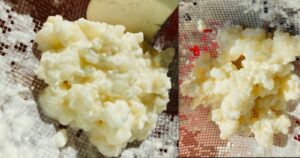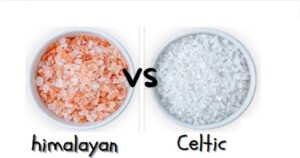Discover the benefits, sources, and strains of probiotics and fiber. Learn how probiotics support gut health with strains like Lactobacillus and Bifidobacterium, while fiber aids digestion and promotes a healthy microbiome. Find out the best food sources for both to enhance your wellness.
Probiotics are live microorganisms, typically bacteria or yeast. Often referred to as “good” or “friendly” bacteria because they help maintain a healthy balance in the gut microbiota. The gut microbiota consists of trillions of microorganisms that play a crucial role in digestion, immune function, and overall health.
Dietary fiber is a type of carbohydrate found in plant-based foods that the human body cannot digest. Unlike other carbohydrates that are broken down into sugars and absorbed, dietary fiber passes relatively intact through the digestive system. Despite its indigestibility, fiber plays a crucial role in maintaining digestive health and overall well-being.

Do you know certain types of Dietary fiber act as prebiotics. Dietary fiber consists of the parts of plant foods that the body can’t digest or absorb. Unlike other food components like fats, proteins, or carbohydrates, which the body breaks down and absorbs, fiber isn’t digested by the body. It passes relatively intact through the stomach, small intestine, and colon and out of the body.
Key Differences between probiotics and dietary fiber
| Probiotics | Dietary Fiber |
|---|---|
| Live beneficial bacteria that are consumed to improve gut health. | Indigestible carbohydrates that aid in digestion and improve bowel health. |
| Yogurt, kefir, sauerkraut, kimchi, miso, kombucha, supplements. | Fruits, vegetables, whole grains, legumes, nuts, seeds. |
| Enhance the balance of gut microbiota, support immune function, may improve digestive health. | Promote bowel regularity, help control blood sugar levels, may lower cholesterol levels. |
| Colonize the gut and compete with harmful bacteria, produce beneficial compounds. | Add bulk to stool, feed beneficial gut bacteria (prebiotic effect), slow digestion and absorption of nutrients. |
| May help with conditions like IBS, diarrhea, allergies, and some infections. | May reduce risk of heart disease, diabetes, constipation, and some cancers. |
| Typically consumed in fermented foods or as dietary supplements. | Naturally found in plant-based foods, can also be taken as supplements. |
| Must survive stomach acid to reach the intestines and be effective. | Not digestible by human enzymes; instead, it is fermented by gut bacteria. |
| Possible temporary digestive discomfort, such as gas or bloating. | Can cause bloating and gas if consumed in large amounts or if not gradually introduced. |
| Supplements are regulated as food, not as strictly as medications. | Generally recognized as safe (GRAS) by food safety authorities. |
| Various strains of bacteria, such as Lactobacillus and Bifidobacterium. | Soluble fiber (e.g., pectin, inulin) and insoluble fiber (e.g., cellulose). |
Different probiotic strains and their specific benefits
| Probiotic Strain | Specific Benefits |
|---|---|
| Lactobacillus acidophilus | Supports gut health, may reduce diarrhea, improves lactose digestion, boosts immune function. |
| Lactobacillus rhamnosus | Helps prevent and treat diarrhea, particularly antibiotic-associated diarrhea, may reduce symptoms of IBS. |
| Lactobacillus reuteri | Promotes dental health, reduces symptoms of colic in infants, supports gut health, may improve skin conditions. |
| Lactobacillus casei | Helps alleviate constipation, supports gut health, may reduce lactose intolerance symptoms. |
| Lactobacillus plantarum | Helps with IBS symptoms, supports gut health, enhances nutrient absorption, may improve skin health. |
| Bifidobacterium bifidum | Supports gut health, enhances immune function, may reduce IBS symptoms, helps alleviate diarrhea. |
| Bifidobacterium longum | Reduces inflammation, supports gut health, helps alleviate constipation, may improve immune response. |
| Bifidobacterium lactis | Enhances immune function, supports gut health, may reduce risk of infections, helps alleviate IBS symptoms. |
| Bifidobacterium breve | Supports gut health, may improve skin conditions like eczema, helps reduce constipation, enhances immune function. |
| Saccharomyces boulardii | Yeast probiotic, helps treat and prevent diarrhea, including traveler’s diarrhea and antibiotic-associated diarrhea, may reduce symptoms of IBS. |
Benefits by Strain
- Lactobacillus Strains: Generally beneficial for digestive health, enhancing immune function, improving lactose digestion, and reducing symptoms of IBS and diarrhea.
- Bifidobacterium Strains: Typically support gut health, enhance immune function, reduce inflammation, and alleviate constipation and IBS symptoms.
- Saccharomyces boulardii: A unique yeast probiotic effective in treating and preventing various types of diarrhea, and may help with IBS symptoms.
These strains are commonly found in various probiotic supplements and fermented foods, and their specific benefits can vary based on individual health conditions and needs.
Types of Fiber Soluble vs Insoluble fiber
Fiber is a crucial component of a healthy diet, and it comes in two main types: soluble and insoluble fiber. Both types are important for maintaining good health, but they function differently in the body.

Soluble fiber can dissolves in water to form a gel-like substance.
Insoluble fiber does not dissolve in water and adds bulk to the stool and helps food pass more quickly through the stomach and intestines.
| Insoluble Fiber | Soluble Fiber |
|---|---|
| Whole Grains Whole wheat, brown rice, barley | Whole Grains: Barley |
| Nuts and Seeds Sunflower seeds, almonds | Nuts and Seeds Flaxseeds, chia seeds, sunflower seeds, almonds |
| Vegetables Cauliflower, green beans, potatoes | Vegetables Carrots |
| Wheat bran | Oatmeal, oat bran, granola |
| Beans, Lentils, and Peas Black beans, kidney beans, lentils, chickpeas, split peas | |
| Fruits Apples, citrus fruits (e.g., oranges, grapefruits) |
Health Benefits of Soluble fiber
- Heart Health: Soluble fiber can help lower LDL (bad) cholesterol levels by binding with cholesterol in the digestive system and removing it from the body.
- Blood Sugar Control: It slows down the absorption of sugar, which can help improve blood sugar levels and reduce the risk of type 2 diabetes.
- Weight Management: By increasing feelings of fullness, soluble fiber can help with weight management.
Health Benefits of Insoluble fiber
- Digestive Health: Insoluble fiber helps prevent constipation and promotes regular bowel movements by adding bulk to the stool.
- Colon Health: It helps move waste through the colon more quickly, which can reduce the risk of colon cancer.
- Weight Management: Adds bulk to the diet without adding extra calories, helping to maintain a healthy weight.
For optimal health benefits, it’s important to include both types of fiber in your diet. A balanced diet with a variety of fiber-rich foods can help ensure you get enough of both types.
Probiotics and Dietary Fiber: How They Work and Why They’re Important
Dietary Fiber How It Works
- Soluble Fiber:
- Dissolves in water, forming a gel that slows digestion.
- Fermented by gut bacteria, producing beneficial compounds.
- Insoluble Fiber:
- Does not dissolve in water.
- Adds bulk to stool, helping food move through the digestive system.
Benefits:
- Digestion:
- Soluble fiber helps control blood sugar and keeps you feeling full longer.
- Insoluble fiber helps prevent constipation and promotes regular bowel movements.
- Gut Health:
- Feeds beneficial gut bacteria, helping them thrive.
- Produces short-chain fatty acids (SCFAs) that nourish the colon.
Role in Bowel Movements:
- Stool Formation:
- Soluble fiber softens stool, making it easier to pass.
- Insoluble fiber adds bulk to stool, promoting regularity.
Probiotics How They Work
- Colonization:
- Live microorganisms that colonize the gut when consumed.
- Immune Boost:
- Enhance the immune system, helping to fight off harmful pathogens.
- Gut Protection:
- Strengthen the gut barrier to prevent harmful substances from entering the body.
- Competitive Exclusion:
- Compete with harmful bacteria, preventing them from taking hold.
Benefits:
- Gut Health:
- Restore and maintain a healthy balance of gut bacteria.
- Produce substances that inhibit harmful bacteria.
- Digestion:
- Aid in nutrient absorption and help digest lactose for those who are intolerant.
- Reduce symptoms of gastrointestinal disorders like IBS and IBD.
Role in Bowel Movements:
- Probiotics help maintain a healthy gut environment, supporting regular and healthy bowel movements.
Similarities of Both fiber and probiotics
- Both fiber and probiotics support a healthy gut.
- Both can prevent and manage digestive disorders.
Differences:
- Dietary Fiber:
- Plant-based and non-digestible.
- Adds bulk to stool and slows digestion.
- Probiotics:
- Live beneficial bacteria or yeasts.
- Balance gut bacteria and enhance immunity.
Probiotics and Fiber in Digestive Health Explained
Probiotics are live microorganisms that provide health benefits when consumed in adequate amounts. They are primarily found in fermented foods and dietary supplements. Their benefits in digestive health include:
Irritable Bowel Syndrome (IBS)
- Symptom Relief: Probiotics can help alleviate symptoms of IBS, such as bloating, gas, and abdominal pain. Specific strains like Bifidobacterium infantis and Lactobacillus plantarum are particularly effective.
- Modulation of Gut Microbiota: Probiotics help restore the balance of gut bacteria, which can be disrupted in IBS patients.
Diarrhea
- Prevention and Treatment: Probiotics are effective in preventing and treating various forms of diarrhea, including antibiotic-associated diarrhea and infectious diarrhea. Strains like Lactobacillus rhamnosus and Saccharomyces boulardii are commonly used.
Constipation
- Improved Bowel Movements: Certain probiotic strains, such as Bifidobacterium lactis, can increase the frequency of bowel movements and improve stool consistency.
- Enhanced Gut Motility: Probiotics can stimulate gut motility, aiding in the relief of constipation.
Fiber in Digestive Health
Dietary fiber, found in plant-based foods, is essential for maintaining digestive health. There are two main types of fiber: soluble and insoluble.
Irritable Bowel Syndrome (IBS)
- Symptom Management: Soluble fiber, such as psyllium, can help manage IBS symptoms by absorbing water and forming a gel-like substance that eases bowel movements.
- Dietary Adjustments: Insoluble fiber might worsen symptoms in some IBS patients, so individualized dietary adjustments are crucial.
Constipation
- Bulk Formation: Insoluble fiber adds bulk to stool, making it easier to pass and helping to prevent constipation.
- Hydration and Motility: Soluble fiber helps retain water in the stool, making it softer and easier to pass, and promotes regular bowel movements.
Diarrhea
- Stool Formation: Soluble fiber can help solidify loose stools by absorbing excess water, which is beneficial in managing diarrhea.
- Gut Health: Fiber supports overall gut health by promoting the growth of beneficial bacteria, which can help prevent diarrhea.
Health benefits when Combining both Probiotics & Dietary fiber
Combining probiotics and dietary fiber offers a comprehensive approach to enhancing digestive health and overall well-being. This synergy supports a balanced gut microbiota, improves digestive function, strengthens the immune system, reduces inflammation, enhances nutrient absorption, supports metabolic health, and contributes to better mental health.
By incorporating a variety of probiotic and fiber-rich foods into your diet, along with appropriate supplements when necessary, you can optimize your health and prevent a range of chronic conditions.
1. Enhanced Gut Microbiota Balance
- Probiotics: Introduce beneficial bacteria directly into the gut.
- Fiber (Prebiotics): Acts as food for these beneficial bacteria, helping them thrive and outcompete harmful bacteria.
- Synergy: The combination ensures a more robust and diverse gut microbiota, which is crucial for digestive health.

2. Improved Digestive Function
- Constipation Relief: Insoluble fiber adds bulk to the stool, while probiotics can enhance gut motility and the production of short-chain fatty acids that promote bowel regularity.
- Diarrhea Management: Soluble fiber absorbs excess water in the stool, solidifying it, while probiotics help restore the balance of gut bacteria disrupted by infection or antibiotics.
3. Enhanced Immune Function
- Probiotics: Modulate the immune system, enhancing the body’s defense mechanisms against pathogens.
- Fiber: Fermentation of fiber by gut bacteria produces short-chain fatty acids (SCFAs) like butyrate, which have anti-inflammatory properties.
- Synergy: A healthy gut microbiota, supported by both probiotics and fiber, strengthens the gut barrier and enhances immune responses.
4. Reduced Inflammation
- Probiotics: Reduce gut inflammation by maintaining a healthy balance of gut bacteria.
- Fiber: SCFAs produced from fiber fermentation, particularly butyrate, have anti-inflammatory effects.
- Synergy: The combination can help reduce systemic inflammation, which is linked to various chronic conditions.
5. Enhanced Nutrient Absorption
- Probiotics: Improve the gut’s ability to absorb nutrients by maintaining a healthy gut lining and supporting digestive enzymes.
- Fiber: Slows down digestion, allowing for better absorption of nutrients.
- Synergy: Together, they ensure optimal nutrient absorption and utilization.
6. Support for Metabolic Health
- Probiotics: Can influence energy metabolism and reduce fat storage.
- Fiber: Helps regulate blood sugar levels by slowing down the absorption of glucose.
- Synergy: Combining both can improve metabolic health markers, such as blood sugar and cholesterol levels, potentially reducing the risk of metabolic disorders like type 2 diabetes and obesity.
7. Mental Health Benefits
- Probiotics: Influence the gut-brain axis, potentially improving mood and cognitive function.
- Fiber: Fermentation of fiber produces SCFAs, which have been shown to influence brain function and behavior.
- Synergy: A healthy gut microbiota supported by both probiotics and fiber can contribute to better mental health and reduce symptoms of anxiety and depression.
8. Long-term Health and Disease Prevention
- Probiotics: Regular consumption helps maintain a healthy balance of gut bacteria, reducing the risk of gastrointestinal disorders.
- Fiber: A high-fiber diet is associated with a lower risk of colorectal cancer, cardiovascular disease, and other chronic conditions.
- Synergy: Combining both probiotics and fiber can provide long-term health benefits, including reducing the risk of chronic diseases and promoting overall well-being.
Practical Tips for Combining Probiotics and Dietary Fiber
1. Dietary Sources:

- Probiotics: Include fermented foods like yogurt, kefir, sauerkraut, kimchi, and miso.
- Fiber: Incorporate high-fiber foods such as fruits, vegetables, whole grains, legumes, nuts, and seeds.
2. Supplementation:
- Consider taking a probiotic supplement with specific strains known to be beneficial for your health condition.
- Use fiber supplements like psyllium husk, inulin, or glucomannan if dietary intake is insufficient.
3. Timing and Dosage:
- Start with small amounts to allow your digestive system to adjust.
- Gradually increase fiber intake to avoid gastrointestinal discomfort.
- Follow recommended dosages for probiotic supplements to ensure effectiveness.
4. Hydration:
- Drink plenty of water when increasing fiber intake to help it move through the digestive system and prevent constipation.
5. Consistency:
- Regular and consistent consumption of both probiotics and fiber is key to reaping long-term health benefits.
Probiotics and Fiber in Weight Management
Probiotics in Weight Management
Probiotics are live microorganisms that provide health benefits when consumed in adequate amounts. Their role in weight management and metabolic health includes:
Weight Loss
- Regulation of Appetite: Some probiotic strains can influence the production of hormones related to appetite and satiety, such as ghrelin and leptin, potentially helping to reduce calorie intake.
- Fat Storage Reduction: Certain probiotics can help reduce fat storage by modulating energy metabolism and increasing the breakdown of fats.
Metabolic Health
- Improved Insulin Sensitivity: Probiotics can enhance insulin sensitivity, which helps in better regulation of blood sugar levels and reduces the risk of type 2 diabetes.
- Reduction in Inflammation: Probiotics can reduce inflammation, which is associated with obesity and metabolic disorders.
- Gut Barrier Integrity: By improving gut barrier function, probiotics can prevent endotoxemia, a condition that contributes to metabolic dysfunction and obesity.
Specific Strains and Effects
- Lactobacillus gasseri: Associated with a reduction in abdominal fat.
- Bifidobacterium breve: Linked to reduced body weight and fat mass.
- Lactobacillus rhamnosus: May help women lose weight and keep it off.
Fiber in Weight Management
Dietary fiber, especially soluble fiber, plays a significant role in weight management and metabolic health:
Weight Loss
- Satiety and Fullness: Soluble fiber forms a gel-like substance in the gut, which slows down digestion and increases feelings of fullness, helping to reduce overall calorie intake.
- Calorie Displacement: High-fiber foods are generally less calorie-dense, allowing for larger portions without excessive calorie consumption.
Metabolic Health
- Blood Sugar Regulation: Fiber slows the absorption of sugar, helping to prevent blood sugar spikes and improve insulin sensitivity.
- Cholesterol Reduction: Soluble fiber can help lower LDL cholesterol levels by binding to bile acids in the intestine and promoting their excretion.
- Gut Health: Fiber supports the growth of beneficial gut bacteria, which produce short-chain fatty acids (SCFAs) that have various metabolic benefits.

Types and Sources of Fiber
- Soluble Fiber: Found in oats, barley, nuts, seeds, beans, lentils, peas, and some fruits and vegetables.
- Insoluble Fiber: Found in whole grains, wheat bran, vegetables, and legumes.
Both probiotics and dietary fiber offer significant benefits for weight management and metabolic health, with distinct and complementary mechanisms of action.
Probiotics primarily work by modulating gut microbiota and reducing inflammation, while fiber enhances satiety and regulates blood sugar levels. Combining both can provide a more effective approach to achieving and maintaining a healthy weight and improving metabolic health.
Understanding the Role of Probiotics in Mitigating Antibiotic Side Effects
Antibiotic-associated diarrhea (AAD) occurs when antibiotics disrupt the natural balance of gut bacteria, leading to gastrointestinal symptoms. Probiotics can play a crucial role in preventing Antibiotic-associated diarrhea (AAD) by restoring the balance of beneficial bacteria in the gut.
Antibiotics can indiscriminately kill both harmful and beneficial bacteria. Probiotics help replenish the beneficial bacteria, restoring the balance of gut microbiota.
Probiotics produce substances like bacteriocins and short-chain fatty acids that inhibit the growth of pathogenic bacteria.
Probiotics strengthen the gut barrier, preventing harmful bacteria and toxins from crossing into the bloodstream and causing inflammation.
Probiotics can enhance the immune response, helping the body fight off infections more effectively.
Effective Probiotic Strains for Antibiotic-associated diarrhea AAD & Dosage
- Lactobacillus rhamnosus GG: One of the most studied and effective strains for preventing AAD.
- Saccharomyces boulardii: A yeast probiotic that has shown effectiveness in preventing AAD.
- Lactobacillus casei: Known for its ability to reduce the incidence of AAD.
- Bifidobacterium lactis: Helps restore the balance of gut microbiota during and after antibiotic use.
| Probiotic Strain | Recommended Dosage |
|---|---|
| General Probiotic Guidance | 1 billion to 10 billion CFUs per day |
| Saccharomyces boulardii | 250-500 mg per day |
| Lactobacillus strains | 1-10 billion CFUs per day |
| Bifidobacterium strains | 1-10 billion CFUs per day |
Recommended Daily Intake of Fiber
The recommended daily intake of fiber varies by age and gender. The following table provides the guidelines based on recommendations from health authorities such as the Institute of Medicine.
| Age Group | Recommended Daily Intake of Fiber (grams) |
|---|---|
| Children 1-3 years | 19 grams |
| Children 4-8 years | 25 grams |
| Boys 9-13 years | 31 grams |
| Girls 9-13 years | 26 grams |
| Boys 14-18 years | 38 grams |
| Girls 14-18 years | 26 grams |
| Men 19-50 years | 38 grams |
| Women 19-50 years | 25 grams |
| Men 51 years and older | 30 grams |
| Women 51 years and older | 21 grams |
| Pregnant women | 28 grams |
| Lactating women | 29 grams |
Key Points
- Children and Adolescents:
- The fiber needs of children and adolescents increase with age to support their growth and development.
- Adults:
- Men generally require more fiber than women due to larger body size and higher caloric intake.
- Fiber needs remain relatively high to support digestive health, cardiovascular health, and weight management.
- Older Adults:
- Fiber requirements decrease slightly with age due to changes in metabolism and activity levels.
- Pregnant and Lactating Women:
- Increased fiber intake is recommended to support digestion and prevent constipation, which is common during pregnancy.
Probiotics and Allergy Relief: Help Alleviate Symptoms of Certain Allergies
How Probiotics Help:
- Immune Modulation: Probiotics can modulate the immune system, helping it respond more appropriately to allergens.
- Barrier Function: They help strengthen the gut barrier, preventing allergens from entering the bloodstream and triggering an immune response.
- Anti-Inflammatory Effects: Probiotics can reduce inflammation, which is often a component of allergic reactions.
- Microbiome Balance: By promoting a healthy balance of gut bacteria, probiotics can reduce the likelihood of allergic reactions.
Common Allergies Addressed
- Eczema: Certain probiotic strains can reduce the severity and frequency of eczema flare-ups.
- Seasonal Allergies: Probiotics may help alleviate symptoms like runny nose, sneezing, and itchy eyes.
- Food Allergies: Some studies suggest probiotics might reduce the severity of food allergy reactions.
Resources
https://www.nccih.nih.gov/health/probiotics-what-you-need-to-know
https://www.ncbi.nlm.nih.gov/books/NBK218764









